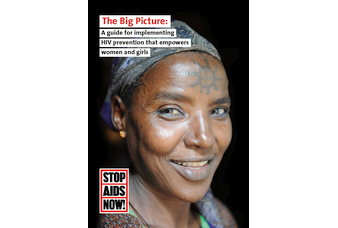 15 lost years in making the female condom accessible.
15 lost years in making the female condom accessible.
Oxfam Novib has been one of few organisations in the world investing in allowing the female condom to serve its purpose. I was fortunate to have the job of researching and writing this briefing paper for them.
They and the World Population Fund used it in their advocacy push at the 2008 International AIDS Conference.
Download
Extract
2008 marks 15 years since the female condom was invented, and, disgracefully, 15 years of failing to make them accessible to the women who need them. Despite the absence of any other female-initated form of protection, and unprecedented rises in funding for the response to HIV, female condoms remain inaccessible, and their contribution remains untapped.
The urgent need for access to female condoms is evident in the feminisation of the HIV pandemic, the large unmet need for contraception, and the pitiful progress towards meeting Millennium Development Goals 5 and 6 on maternal health and halting and reversing the spread of HIV.
Why provide female condoms, when male condoms are readily available, much cheaper, and provide a comparable level of protection?
- Female condoms are a tool to assist women’s empowerment. Women who use female condoms report an increased sense of power for negotiation of safer sex, and a greater sense of control and safety during sex. It will be many years until women have any alternative femaleinitiated means of protecting themselves.
- Providing both female and male condoms leads to more instances of protected sex and reductions in the incidence of sexually transmitted infections (STIs). Their additive effect, providing protection in instances which would not be protected by male condoms, makes them a costeffective form of HIV prevention.
Studies have repeatedly shown high levels of acceptability for female condoms. Some users prefer them over male condoms, as they offer more flexibility regarding the timing of putting them on and taking them off, and have a more natural feel. However, many donors and policy-makers remain sceptical that sufficient demand for them exists. Yet examination of femalecondom projects reveals significant demand, even though it is often deliberately suppressed and unintentionally undermined by stigmatisation and running out of stock. What is perceived as an issue of demand is actually one of supply. Expanding access to female condoms is held up not at the users’ end, but at the start of the chain: how much money donors and governments are willing to invest in buying female condoms, supporting female-condom programmes, and developing low-cost female condoms.
What is behind the failure to act comprehensively to create access to female condoms? Responses from donors and policy-makers to the female condom mirror the common reasons for not using a male condom: responses formed by ignorance, culture, denial, ‘poverty’, and conservatism. Added to this are overarching errors of a lack of leadership, a huge funding bias against existing forms of primary HIV prevention, failure to scale up programming, and failure to invest in strategies to lower the cost of female condoms.
Of course, some efforts have been been made in the past 15 years, which have accelerated since the launch of the United Nations Population Fund’s (UNFPA) global Female Condom Initiative in 2005. The rapid expansion of sales and free distribution in the few countries at the forefront of female condom programming demonstrates the massive unmet demand for female condoms. But there is so much more to be done. Worldwide, in 2007, roughly 423 male condoms were produced for just one female condom. Female condoms currently have a unit cost about 18 times higher than male condoms.
The levels of investment and programming needed to increase the choice of available female condoms, to lower prices and to expand production are highly feasible. Through collaborative action, donors, governments, civil society organisations and the private sector can begin the progress of achieving universal access to female condoms. Female condoms exist now, and concerted efforts to make them accessible must begin now.
The Big Picture: A guide for gender transformative HIV programming




